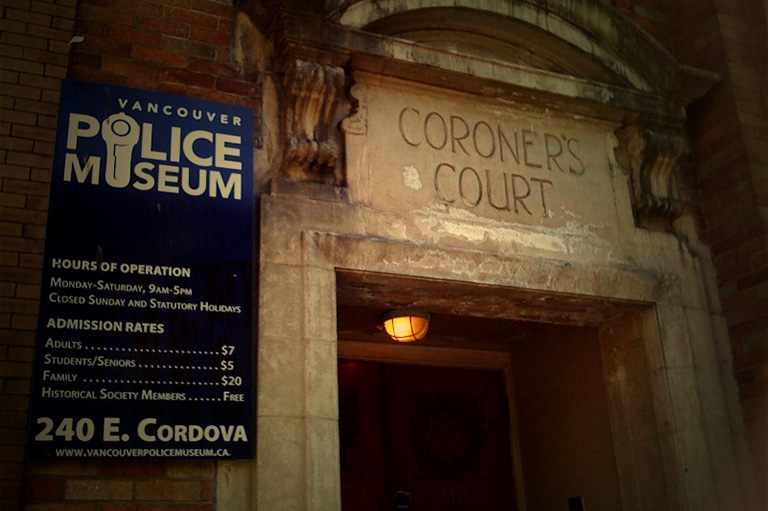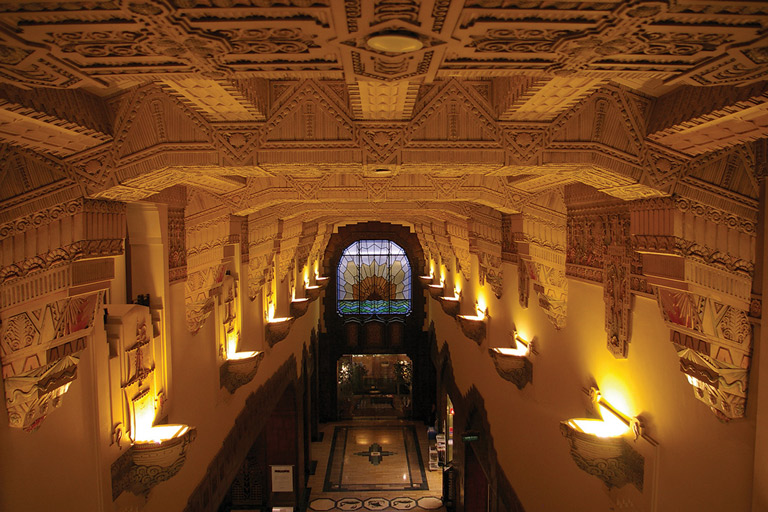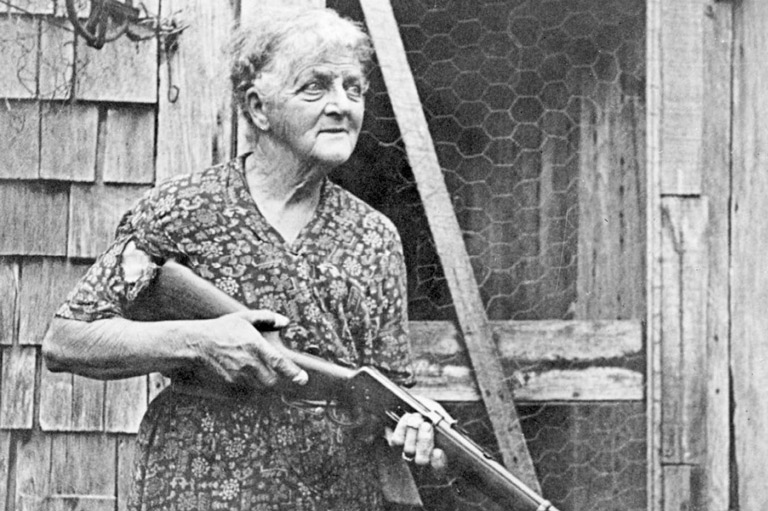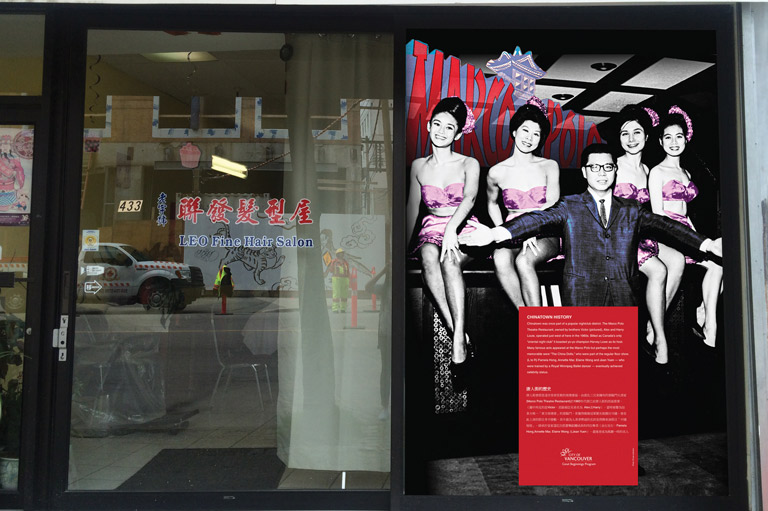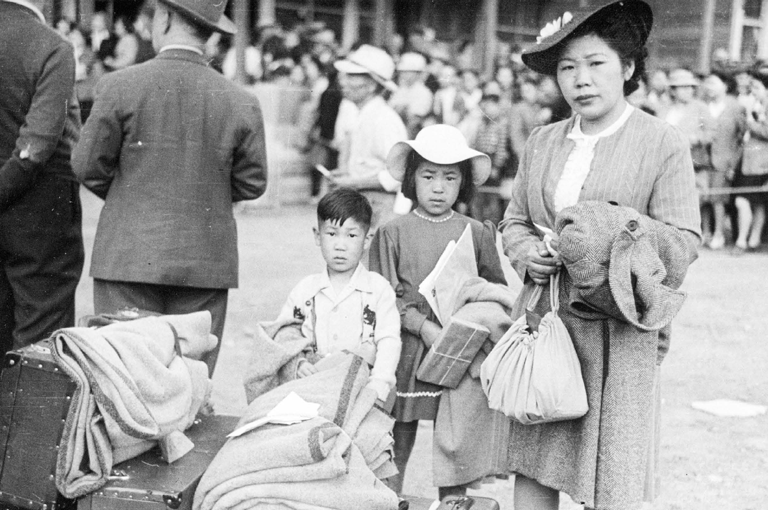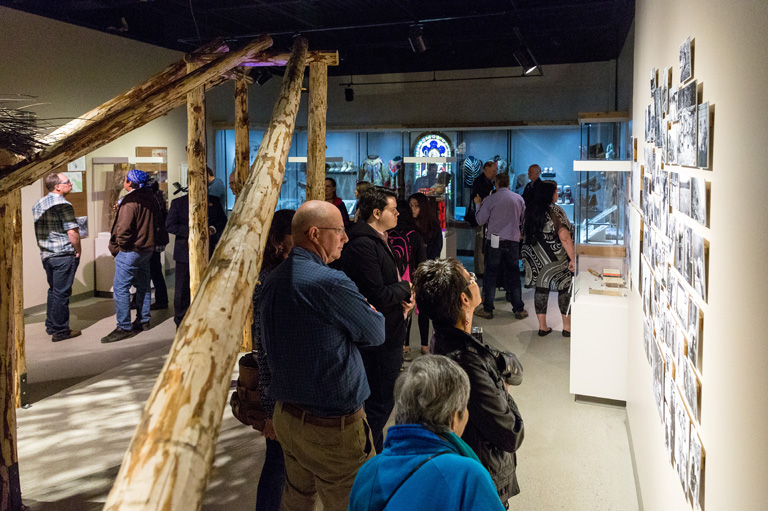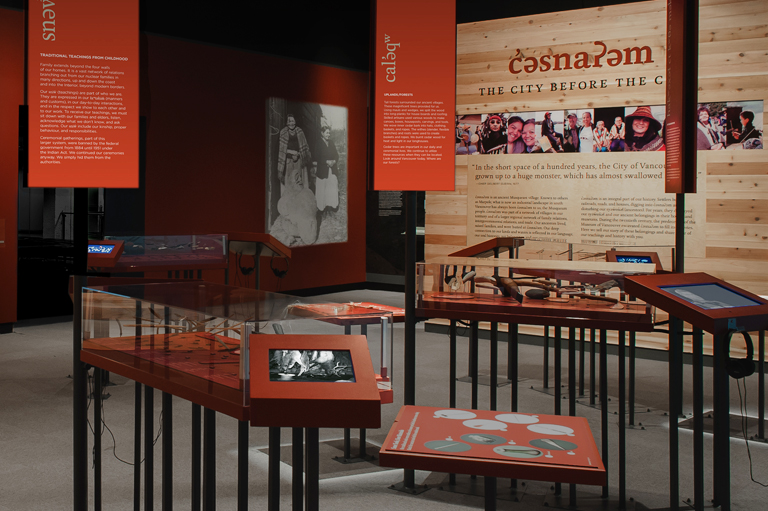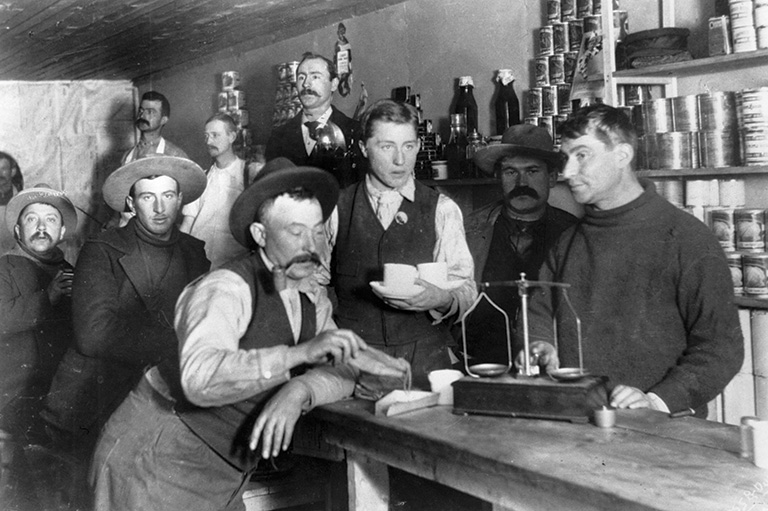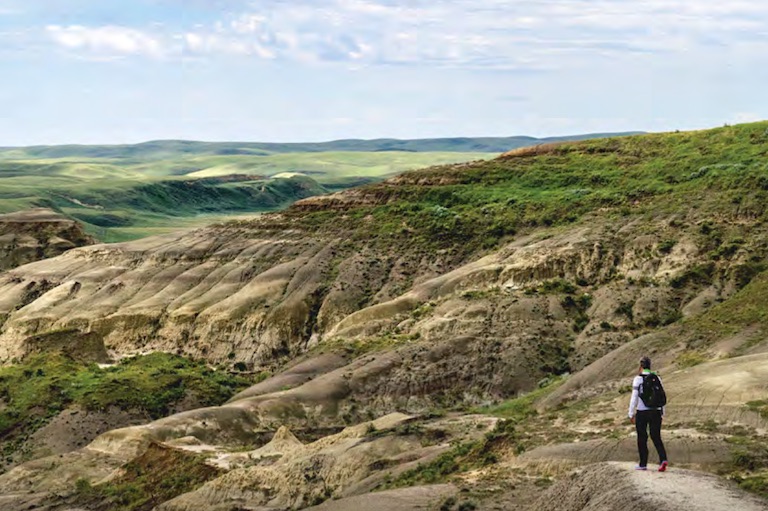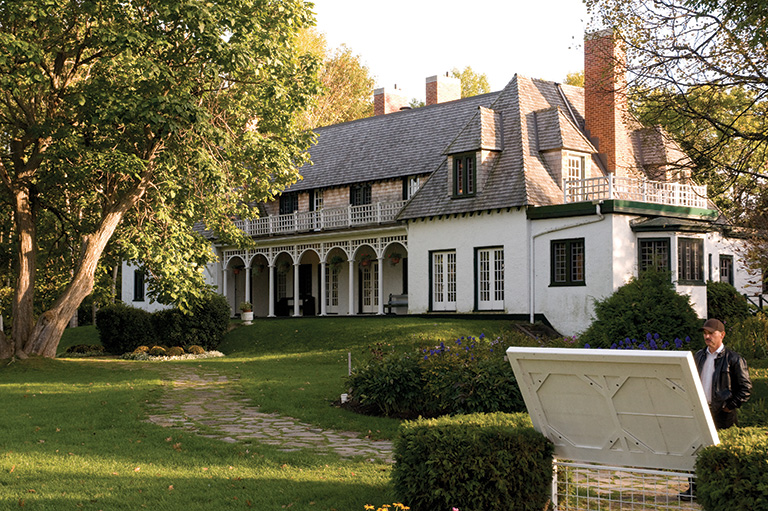Transformations Renewed
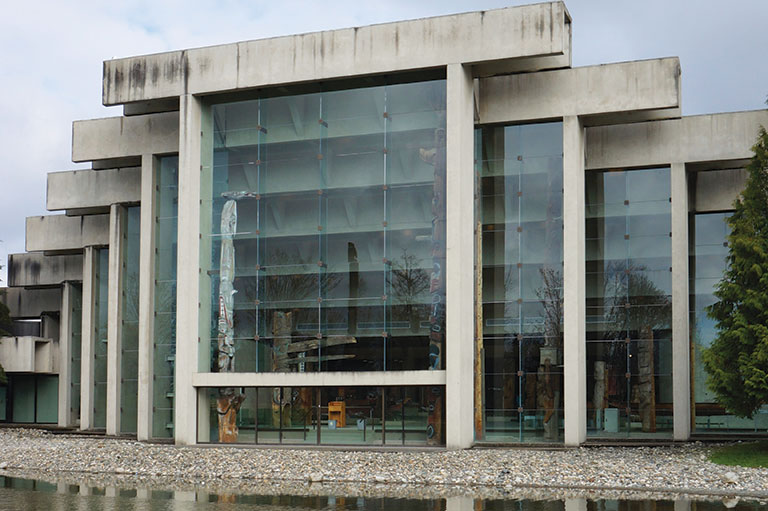
Northwest Coast Indigenous art and cultural practices that were actively suppressed a century ago are today widely celebrated both in traditional forms and via new experiments and manifestations. While several British Columbia First Nations have established cultural centres in their own communities, a visit to the Vancouver area presents numerous opportunities to see and to learn about the region’s Indigenous art.
When arriving or departing via the Vancouver International Airport, situated on the traditional territory of the Musqueam First Nation, visitors encounter large sculptural installations featuring mostly traditional forms that have been created within the past few decades by leading Indigenous artists.
They include pieces by Musqueam carver Susan Point, whose richly evocative Cedar Connection sits beside the walkway to the Canada Line SkyTrain station, and Bill Reid’s haunting The Spirit of Haida Gwaii: The Jade Canoe in the international terminal. In these and other works, links between nature and culture are interwoven as part of community and family histories.
Coastal artisans have long produced skilfully crafted items for cultural and ceremonial purposes as well as for trade. Sculptures, prints, jewellery, and other items made by Indigenous artists can be seen and purchased at the Bill Reid Gallery in downtown Vancouver.
Meanwhile, as part of revitalization efforts in the city’s Downtown Eastside, Skwachàys Lodge allows visitors to watch as works are created in its main-floor gallery by Indigenous artists in residence. It also offers themed hotel rooms.
Across the Burrard Bridge from downtown, the Museum of Vancouver’s remarkable Haida Now exhibition — which continues at least until April 2020 — was created in partnership with the Haida Gwaii Museum. Dozens of intricate argillite carvings, including pieces by renowned carver Charles Edenshaw, are among more than 450 historical and contemporary works presenting aspects of Haida culture.
The exhibition explains how artworks show histories, family lineages, and social standing while playing economic and ceremonial roles, and it places the particular Haida artistic “dialect” in the context of work produced by other coastal First Nations. It also contrasts authentic work with “artifakes” — mass-produced replicas — while explaining that items such as clan crests are protected intellectual property.
At the University of British Columbia, the Museum of Anthropology houses impressive collections and rare sculptures in a building designed by Vancouver architect Arthur Erickson, who incorporated elements of Haida architecture.
Thousands of artifacts from First Nations (and from around the world) are displayed, typically following consultations with members of the represented communities. The museum grounds include large totem poles and a pair of Haida houses, while the newly opened Indian Residential Schools History and Dialogue Centre is nearby on the UBC campus.
A two-hour trip north to Whistler via the Sea to Sky Highway offers breathtaking views of islands and mountains while giving a sense of the abundant lands and seas that provided the material and cultural wealth of coastal First Nations as well as inspiration for their art forms.
The Squamish Lil’wat Cultural Centre, built at Whistler in time for the 2010 Winter Olympics, operates as a partnership between two First Nations. It showcases Squamish and Lil’wat art, history, and culture via hourly guided tours through a unique building with vistas onto the surrounding forest.
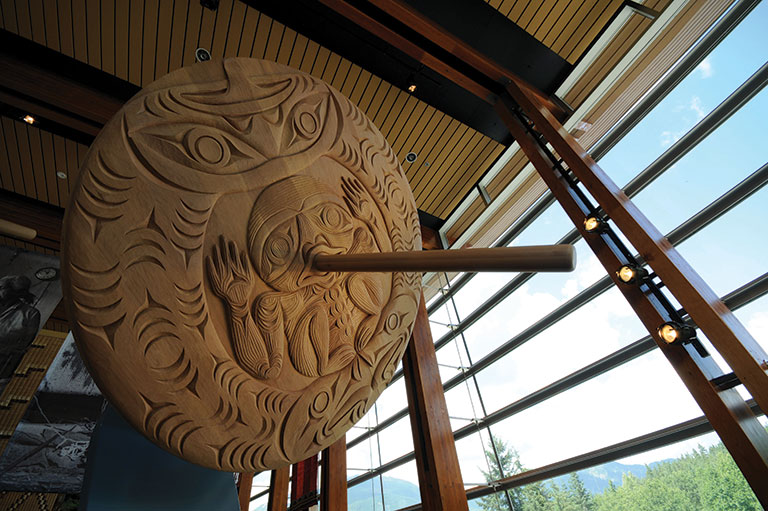
From there it’s a short walk to the Audain Art Museum, housed in an award-winning building by Patkau Architects that opened in 2016. Historical artifacts are displayed alongside recent and contemporary art by Lawrence Paul Yuxweluptun, Brian Jungen, and other Indigenous and non-Indigenous B.C.-based artists.
Temporary exhibits during a recent visit included Heiltsuk artist Shawn Hunt’s high-tech version of an Indigenous transformation mask. Hunt’s mask — which produces a dramatic “mixed-reality” audio-visual experience for those who wear it — was exhibited alongside a more traditional mask by Robert Davidson.
At the same time, the exhibition Beau Dick: Revolutionary Spirit set the work of the Kwakwaka’wakw carver, hereditary chief, and community activist alongside pieces created by his forerunners, his collaborators, and artists he mentored.
The show was one of the museum’s reconciliatory initiatives, and, according to curator Darrin J. Martens, it presented “an opportunity for increased dialogue related to issues affecting Indigenous communities in the wake of the Residential School experience….”
The Audain also displays numerous paintings by Emily Carr, who famously portrayed coastal cultures and landscapes, but the largest collection of her work belongs to the Vancouver Art Gallery. There a new curatorial program pairs Carr’s paintings with works by other artists — such as Chinese ink painter Lui Shou Kwan or Kwakwaka’wakw contemporary artist Sonny Assu — in special thematic exhibitions.
And in Vancouver’s Stanley Park, totem poles by prominent Indigenous carvers welcome and impress visitors — functions performed by similar poles in coastal communities for generations.
-
 A woven mask by Grace Wilson is part of the Haida Now exhibition at the Museum of Vancouver.Phil Koch
A woven mask by Grace Wilson is part of the Haida Now exhibition at the Museum of Vancouver.Phil Koch -
 A number of prints are among the works displayed in the Haida Now exhibition at the Museum of Vancouver.Courtesy of Museum of Vancouver
A number of prints are among the works displayed in the Haida Now exhibition at the Museum of Vancouver.Courtesy of Museum of Vancouver -
 The grounds of the Museum of Anthropology include large totem poles and a pair of Haida houses.Courtesy of Museum of Anthropology.
The grounds of the Museum of Anthropology include large totem poles and a pair of Haida houses.Courtesy of Museum of Anthropology. -
 Kwakwaka’wakw masks are among thousands of items in the Museum of Anthropology’s Multiversity Galleries.Phil Koch
Kwakwaka’wakw masks are among thousands of items in the Museum of Anthropology’s Multiversity Galleries.Phil Koch -
 Bill Reid’s sculpture The Raven and the First Men is displayed in the Museum of Anthropology’s Bill Reid Rotunda.
Bill Reid’s sculpture The Raven and the First Men is displayed in the Museum of Anthropology’s Bill Reid Rotunda. -
 Skwachàys Lodge Aboriginal Hotel & Gallery in Vancouver includes a rooftop sweat lodge and smudge room.Phil Koch
Skwachàys Lodge Aboriginal Hotel & Gallery in Vancouver includes a rooftop sweat lodge and smudge room.Phil Koch -
 The Welcome Room at Skwachàys Lodge Aboriginal Hotel & Gallery in Vancouver features Indigenous artworks.Courtesy of Skwachàys Lodge.
The Welcome Room at Skwachàys Lodge Aboriginal Hotel & Gallery in Vancouver features Indigenous artworks.Courtesy of Skwachàys Lodge. -
 He-yay meymuy (Big Flood), by Squamish and Kwakwaka’wakw artist Xwalacktun (Rick Harry), at the entrance to the Audain Art Museum in Whistler, B.C.Phil Koch
He-yay meymuy (Big Flood), by Squamish and Kwakwaka’wakw artist Xwalacktun (Rick Harry), at the entrance to the Audain Art Museum in Whistler, B.C.Phil Koch -
 The Great Hall of the Squamish Lil’wat Cultural Centre in Whistler, B.C.Courtesy of Squamish Lil’wat Cultural Centre
The Great Hall of the Squamish Lil’wat Cultural Centre in Whistler, B.C.Courtesy of Squamish Lil’wat Cultural Centre
If you go
Click on the links below for information about opening hours, contact information, directions, special events, and current exhibitions:
Musqueam Cultural Centre Gallery
Indian Residential School History and Dialogue Centre
Bill Reid Gallery of Northwest Coast Art
Skwachàys Lodge Aboriginal Hotel & Gallery
Squamish Lil’wat Cultural Centre
Recommended reading
Here are some recently published books about Northwest Coast Indigenous artists and about art displayed in the Vancouver area:
A Sense of Place: Art at Vancouver International Airport
by Robin Laurence
Beau Dick: Revolutionary Spirit
by Darrin J. Martens
Masterworks from the Audain Art Museum, Whistler
by Ian M. Thom
Entering Time: The Fungus Man Platters of Charles Edenshaw
by Colin Browne
Yakuglas’ Legacy: The Art and Times of Charlie James
by Ronald W. Hawker
Susan Point: Works on Paper
by Dale Croes, Susan A. Point and Gary Wyatt
I had an interesting French Artist to see me this summer: Emily Carr and Wolfgang Paalen in British Columbia
by Colin Browne
Themes associated with this article
Advertisement
You might also like...
Help support history teachers across Canada!
By donating your unused Aeroplan points to Canada’s History Society, you help us provide teachers with crucial resources by offsetting the cost of running our education and awards programs.

